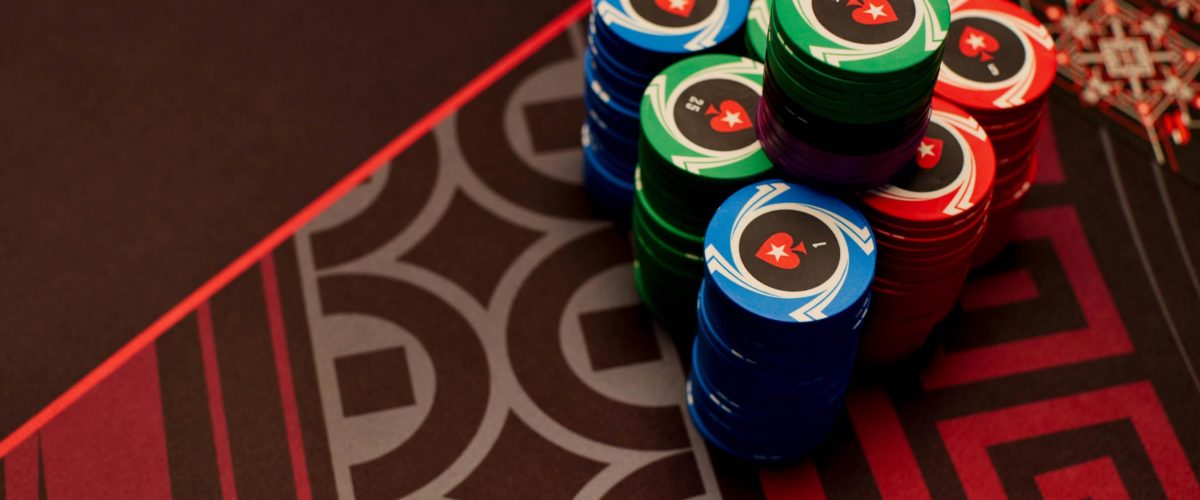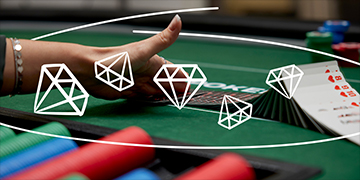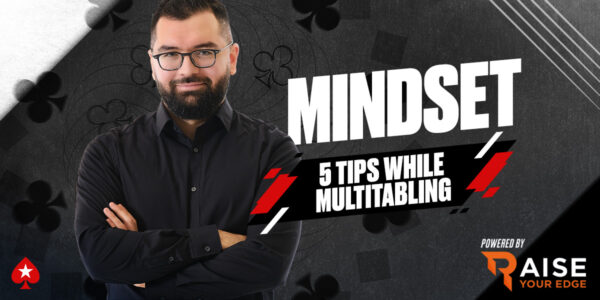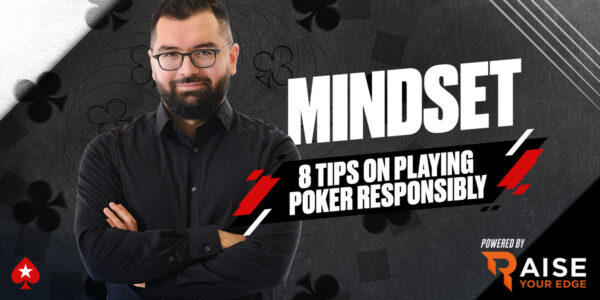The 6 Types of Tilt
Contrary to what you might think, tilt can come in many different forms. While many poker players these days have accepted that tilt does exist and can negatively impact their game, most of them probably don’t realize just how many ways it can affect them.
Tilt can have a detrimental effect on your poker game whether you’re winning or losing, and even something as simple as distraction can lead to massive tilt – quickly followed by significant losses at the poker table. For more in-depth information on how to deal with tilt at the tables you can check out this handy Tilt Management Guide.
Here, we’ll break down the 6 types of tilt you may experience and give you some guidance on how to break away and readjust. Let’s get started.
1. Victim Tilt
Victim tilt is an extremely common form of tilt and pretty much all of us are very susceptible to it. When you experience a bad beat or have been having a bad run of cards it is very easy to fall into a victim mentality. These thoughts are typically something like this:
“Nobody is as unlucky as me, I’m the unluckiest person in the world!”
Or-
“Why does this always happen, I can never seem to catch a break!”
While deep down you might understand in theory that these statements aren’t true and that everyone experiences the same amount of luck and variance in poker, it can be extremely hard to break away from this kind of negative thinking at the table.
The reason we tend to do this is because we don’t want to take responsibility for our circumstances, so we pass off the blame on circumstance and chance.
We’re basically saying to ourselves that our poker results are due to bad luck or misfortune and have nothing to do with our own skills or the skills of our opponents. While luck can obviously play a factor in individual hands, it affects everyone the same and cannot be controlled, no matter what we do.
Blaming our results on just ‘being unlucky’ takes the responsibility of our results away from us and puts it on sheer luck instead. If we just tell ourselves we’re unlucky we don’t have to focus on improving at poker, and get to just complain and whine instead.
Because of this, we must focus on the actions we can take that will have a positive effect on our results. Watch Pokerstars Learn videos and put in the work off the tables, and you’ll be more focused on the decisions that you make instead of the outcome.
2. Revenge Tilt
We’ve definitely seen revenge tilt before, even from some of the biggest names in poker such as Phil Hellmuth! This form of tilt comes about when one specific opponent keeps getting the better of you at the table. Common signs of revenge tilt include phrases like:
“I can’t seem to win against this guy!”
Or-
“Why do you always just have the nuts?”
While we all know that we definitely can win against that player and they’re probably just getting a little bit lucky, we again find ways to detach responsibility from ourselves and blame it all on luck.
Maybe they are just lucky, or maybe they’re outplaying you. Either way you end up feeling like you must seek revenge against that specific player.
Emotional attachment to your nemesis at the table will cloud your judgement and affect your ability to make optimal decisions and stick to your strategy. Players will often ramp up their aggression trying to win a big pot against their enemy, which can then result in big losses and more frustration.
Emotional decisions are basically never bound to be the right decisions in poker, so if you’re feeling revenge tilt towards a certain player it may be best to change tables or at least take a short break to gather your thoughts and recenter your emotions.
3. Dissociation Tilt
Have you ever felt like you’ve lost the concentration or motivation to make optimal decisions at the table? You aren’t affected when you lose, and you aren’t affected when you win. You just feel nothing at all.
This is an extremely dangerous state of mind to be playing poker.
While it’s good to focus on making optimal decisions and detach yourself from the short-term results, being completely dissociated from winning or losing leads to “button-clicking” or just taking actions with little to no reasoning behind them.
You may find yourself in an extreme form of autopilot, randomly going all-in with no thought behind it, or calling just to see what your opponent has.
Players deep into dissociation don’t care whether they’re right or wrong and they don’t care whether they’re making a good decision or a bad one. They are completely detached from reality.
If you find yourself feeling this way, you must take a break from poker immediately until this feeling goes away.
If you don’t, you’ll likely wake up from your disassociated phase with a disgust for the game of poker, as well as a diminished bankroll.
Take a break.
4. Mistake Tilt
When asked about what tilts them the most, many players say they aren’t bothered when they get sucked out on, or are dealt a bad beat.
What hurts them the most is when they make a mistake.
We can sometimes feel like we aren’t allowed to make any mistakes, or that we’re better than everyone and should never make simple errors. However, the fact is that we’re human and we will always be mistake-prone to some degree.
Setting realistic expectations for yourself is very important, because one mistake can send you spiraling into tilt if you aren’t careful. The more study we put in off the tables the less mistakes we’ll make, but even the best players in the world can still mess up from time to time.
Dwelling on your mistakes for too long won’t help you avoid future mistakes, and could instead lead to the opposite. Continuing to beat yourself up for an error actually increases the chances you’ll make another mistake dramatically.
If you find yourself still dwelling on a mistake that occurred several hands ago, it might be a good idea to take a quick break and allow yourself to think through what happened away from the poker table. Running a full hand breakdown can be a good way to understand what happened and what you can potentially do differently in a similar scenario going forward.
Once you have had time to move past your mistake you can return with a more confident and focused mentality, instead of beating yourself up over it and knocking your confidence.
5. Winner’s Tilt
This one may come as a surprise, but tilting is not just for losers. In fact, winner’s tilt can be just as harmful, if not more harmful as other forms of tilt, because it’s much harder to just walk away from.
We’ve all heard a story of a player who got lucky and won a massive tournament for lots of cash, just to blow it all over the next few months and end up losing money in the long term.
When everything is going right and you’re on a massive heater, it’s so easy to get extremely overconfident in your abilities. After all, you can’t seem to do anything but win.
If we aren’t careful with how we handle our emotions while winning, we can often get swept up in the emotions of success.
Players suffering from winner’s tilt will typically become overly aggressive at the table, play stakes that are too high for their bankroll, and sit down in games where they’re probably not a winning player long term.
This is all well and good while you’re getting lucky, but once variance swings and you inevitably stop catching good hands, the tables will turn. You have to focus on sticking to your bankroll strategy, playing correctly at the table, and making the correct adjustments based on the information you have.
Just as you shouldn’t attach too much meaning to a downswing, you also must be careful not to get too attached to success. Swings are a major part of the game, so stay consistent with your habits and study routine and make sure that your decisions aren’t being overly affected by the results of your previous sessions – win or lose.
6. Distraction Tilt
This is the most underrated, but possibly the costliest tilt of all. Elite poker players can also suffer massively from this one, even if they have conquered every other form of tilt.
Distraction tilt refers to the ever-tempting call of social media, video games, movies, multiple tabs and other vices that distract you from the task at hand. Some people have even more subtle symptoms of this form of tilt, such as daydreaming or going into autopilot mode.
Not giving poker your entire focus while you are playing will cost you money, plain and simple. If you’re scatterbrained and unfocused at the table, this could easily lead towards you making suboptimal decisions.
Distraction is extremely detrimental to your poker game and puts you in a state of autopilot or lack of presence at the table, which leads to a higher chance of making mistakes. Then those mistakes lead to mistake tilt (number 4!), and the vicious cycle of tilt begins.
Put your phone in another room, close all your tabs, turn off the TV and focus on playing. This change alone could go a long way towards increasing your winrate.
Coach Bahman:
Bahman Zarghami is a mindset and performance coach who has helped poker players and other high-performing individuals achieve their full potential for over 7 years. He is the head mindset coach for Raise Your Edge as well as the lead mindset instructor here at Pokerstars Learn.
To learn more about Bahman and some detrimental issues most poker players struggle with (and how to overcome them), check out this in-depth interview with him where he tackles some of the biggest problems you’re likely to face at the poker table.













